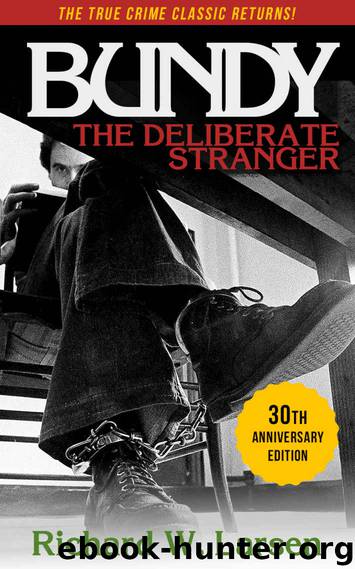Bundy- The Deliberate Stranger by Richard W Larsen

Author:Richard W Larsen
Language: eng
Format: azw3
Published: 2019-01-18T05:00:00+00:00
Chapter Fourteen: Point of the Mountain
Compared with other prisons, the Utah State Penitentiary was regarded as a rather easy, decent joint—a place which had its assaults, rapes, and an occasional inmate murder, but a place which also had the reputation of being well run and secure, relatively free of the overcrowding at other institutions.
Locally, it was known as Point of the Mountain, a name derived from its location, south of Salt Lake City, where the freeway to Provo curls around the toe of some foothills jutting westward from the Wasatch Front. The complex of neatly clustered buildings, ringed by double steel-mesh fences, topped with barbed wire and razor steel, was surrounded by valley farmlands. In early July 1976, Ted Bundy was checked into his medium-security cell there to start serving his time.
Although he was apprehensive about his personal safety, Ted made a deliberate effort to befriend other inmates and, because he had enough familiarity with the law and the skills to write motions, he was accepted as a potentially helpful “jailhouse lawyer.” Prison officials and guards assessed him as a respectful, pleasant, cooperative prisoner. Ted settled into a daily routine of morning calisthenics, letter writing, and work, assisting John O’Connell and Bruce Lubeck on the appeal of his kidnapping conviction. Ted routinely accepted his excommunication from the Mormon Church. “I know there was no alternative for them,” he reflected. After all, despite the fact he was appealing, he stood convicted by law of a felony. Even so, Ted told Mormon friends, he would continue to attend Mormon church services at the prison.
There were no new developments in Colorado, so far as Ted knew—nothing since Mike Fisher and Bill Baldridge had interviewed him in early March about the Caryn Campbell murder. “Colorado is a dead issue, no matter what the hopes of the interested parties might be,” Ted wrote to me. But despite that kind of public-relations utterance, Ted was concerned about what might be happening in the Campbell murder case. It dangled in his mind as a persistent threat. Ted’s guards began to notice that, when he moved through the prison, or while he was at his assigned job in the prison print shop, Bundy’s eyes were constantly moving, absorbing the sights around him, memorizing the places, the routine. “He’s one to keep our eye on,” concluded one of his guards.
Bundy made it a point to gain the acquaintance of Willis Maguire, a lean, dour-eyed prisoner in his mid-forties, a long-termer who had a reputation as an escape artist. In a whispered conversation one day, Bundy proposed a plan to the veteran con. Working, in the print shop, said Bundy, it would be possible for him to manufacture phony identification—driver’s licenses, Social Security cards, other papers—which could be used to assume new identities. That would be his contribution. Maguire’s contribution would be the escape plan itself.
“That’s stupid,” growled Maguire. “Just goddamn stupid. You start messing around printing stuff like that inside here, and it’ll get you into deep shit. ID is nothin’.
Download
This site does not store any files on its server. We only index and link to content provided by other sites. Please contact the content providers to delete copyright contents if any and email us, we'll remove relevant links or contents immediately.
| Espionage | Hoaxes & Deceptions |
| Murder & Mayhem | Organized Crime |
| Serial Killers | White Collar Crime |
Mindhunter: Inside the FBI's Elite Serial Crime Unit by John E. Douglas & Mark Olshaker(9206)
Wiseguy by Nicholas Pileggi(5674)
Room 212 by Kate Stewart(5040)
Hitman by Howie Carr(5021)
Secrecy World by Jake Bernstein(4651)
Killers of the Flower Moon: The Osage Murders and the Birth of the FBI by David Grann(4387)
Papillon (English) by Henri Charrière(4199)
Breaking Free by Rachel Jeffs(4175)
Killers of the Flower Moon by David Grann(3971)
Say Nothing by Patrick Radden Keefe(3903)
American Kingpin by Nick Bilton(3759)
The Secret Barrister by The Secret Barrister(3615)
Molly's Game: From Hollywood's Elite to Wall Street's Billionaire Boys Club, My High-Stakes Adventure in the World of Underground Poker by Molly Bloom(3486)
Mysteries by Colin Wilson(3397)
In Cold Blood by Truman Capote(3311)
Signature in the Cell: DNA and the Evidence for Intelligent Design by Stephen C. Meyer(3075)
I'll Be Gone in the Dark by Michelle McNamara(3024)
Rogue Trader by Leeson Nick(2977)
Bunk by Kevin Young(2950)
